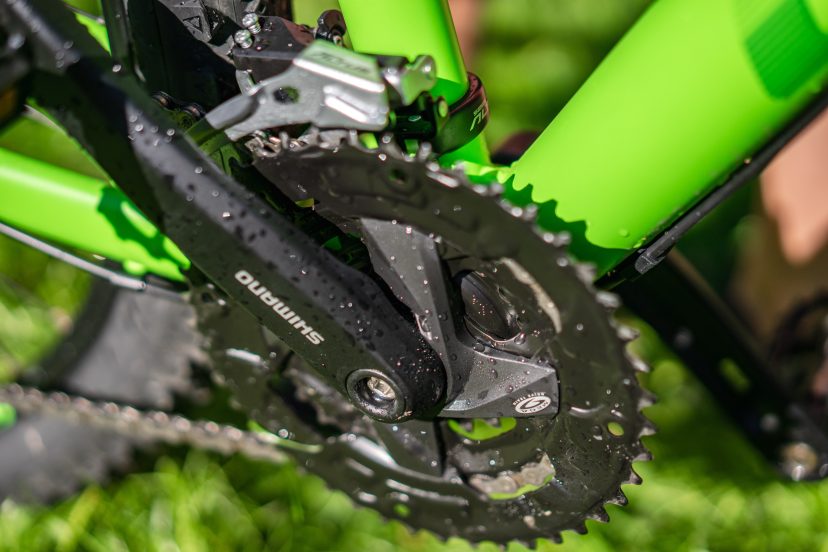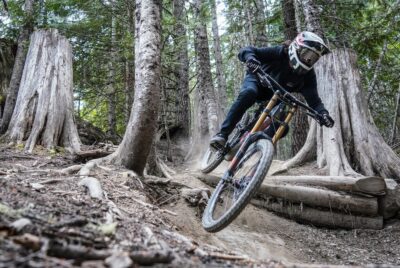Choosing the Right Mountain Bike
Introduction
Mountain biking is an exhilarating and dynamic outdoor activity that offers a unique blend of adrenaline, adventure, and physical fitness. Whether you’re a seasoned rider or a beginner looking to delve into the world of mountain biking, choosing the right bike is crucial for an enjoyable and safe experience. In this article, I’ll guide you through the process of selecting the perfect mountain bike based on your riding style, terrain, and personal preferences.
Determine Your Riding Style
Before diving into the details of bike components and specifications, it’s important to determine your riding style. Mountain biking encompasses various disciplines, each with its own specific requirements and terrain preferences. Understanding your riding style will help narrow down the options and ensure you choose a bike that aligns with your intended use.
Consider Your Terrain
The terrain you plan to ride on plays a significant role in selecting the right mountain bike. Different bikes are designed to excel in specific terrains, and choosing one that matches your intended riding environment will enhance your overall performance and enjoyment. Let’s explore the main types of terrain and the corresponding mountain bike categories.
Frame Materials
The choice of frame material affects the bike’s weight, durability, and overall performance. Each material has its advantages and considerations, so understanding their characteristics is essential in making an informed decision. Here are the common frame materials used in mountain bikes.
Mountain bikes are constructed using a variety of materials, each with its own characteristics and benefits. Common mountain bike materials include:
-
Aluminum:
- Aluminum is a lightweight and durable material commonly used in mountain bike frames.
- It offers good strength-to-weight ratio and is relatively affordable compared to other materials.
- Aluminum frames provide a responsive ride and are suitable for a wide range of riders and terrain.
-
Carbon Fiber:
- Carbon fiber is a lightweight and strong material that is highly favoured in high-end mountain bike frames.
- It offers excellent strength and stiffness while being lighter than aluminum.
- Carbon fiber frames provide enhanced vibration damping and can be designed with specific ride characteristics.
-
Steel:
- Steel is a traditional material used in mountain bike frames known for its durability and strength.
- Steel frames can provide a smooth and comfortable ride due to their natural vibration absorption properties.
- Although steel frames tend to be heavier compared to aluminum or carbon fiber, they are highly resilient and can withstand rough trail conditions.
-
Titanium:
- Titanium is a high-performance material known for its lightweight and exceptional strength.
- Titanium frames offer a unique combination of strength, durability, and comfort.
- They are highly resistant to corrosion, making them suitable for challenging outdoor environments.
It’s worth noting that some mountain bikes may use a combination of materials, such as carbon fiber frames with aluminum or titanium components. The choice of material depends on factors like budget, riding style, terrain preferences, and personal preferences for ride characteristics.
Suspension System
The suspension system of a mountain bike absorbs impacts and provides a smoother ride on rough terrains. There are various suspension types available, and each offers distinct advantages depending on your riding style and preferences. Let’s take a closer look at the different suspension systems.
Mountain bikes are equipped with different suspension systems that help absorb impacts and improve rider comfort and control on rough and uneven terrain. Here are some common mountain bike suspension systems:
-
Hardtail:
- A hardtail mountain bike features a suspension fork in the front but lacks rear suspension.
- The front suspension fork absorbs impacts from the trail, improving comfort and control.
- Hardtails are generally lighter, more efficient on smoother trails, and often more affordable compared to full suspension bikes.
-
Full Suspension (Dual Suspension):
- Full suspension mountain bikes have both front and rear suspension systems.
- The front suspension fork and a rear shock work together to absorb impacts from the trail, providing enhanced traction and control.
- Full suspension bikes excel in technical and rough terrains, offering improved comfort and reducing rider fatigue.
Full suspension bikes can further be categorized based on their suspension travel:
a. Cross Country (XC) Bikes:
XC bikes have shorter suspension travel, typically ranging from 80mm to 120mm. – They are designed for efficient climbing and pedalling, making them suitable for cross-country racing and smoother trails.
b. Trail Bikes:
Trail bikes have moderate suspension travel, usually between 120mm and 150mm. – They offer a balance of climbing efficiency and descending capabilities, making them versatile for various trail conditions.
c. Enduro/All-Mountain Bikes:
Enduro or all-mountain bikes have longer suspension travel, typically ranging from 150mm to 180mm. – They are built for aggressive riding and challenging terrain, providing excellent downhill performance and capable climbing abilities.
d. Downhill/Freeride Bikes:
Downhill or freeride bikes have the longest suspension travel, often exceeding 180mm. – They are specifically designed for downhill racing, bike parks, and extreme terrain, offering maximum suspension performance and durability.
It’s important to choose a mountain bike suspension system that suits your riding style, intended terrain, and personal preferences for comfort and performance.
Bike Fit
Achieving a proper bike fit is crucial for comfort, control, and injury prevention. An ill-fitting bike can lead to discomfort, inefficient power transfer, and compromised handling. Consider the following factors to ensure the right fit.
Choosing the right mountain bike fit is crucial for comfort, control, and overall riding experience. Here are some factors to consider when selecting the appropriate mountain bike fit:
-
Frame Size:
- The frame size is determined by the bike’s geometry and is typically measured in inches or centimeters.
- A properly sized frame ensures proper body positioning and comfort while riding.
- Frame size is usually determined by your height, but other factors such as your inseam length and riding style can also influence the ideal frame size.
-
Standover Height:
- Standover height refers to the clearance between the top tube of the bike frame and your inseam when you straddle the bike with both feet flat on the ground.
- For comfortable and safe mounting and dismounting, there should be sufficient standover clearance to avoid any unwanted contact between your body and the bike frame.
-
Reach and Stack:
- Reach and stack measurements help determine the bike’s horizontal and vertical dimensions, respectively.
- Reach refers to the distance from the center of the bottom bracket to the top of the head tube, indicating how long or short the bike’s cockpit is.
- Stack measures the vertical distance from the center of the bottom bracket to the top of the head tube, indicating the bike’s overall height.
- These measurements influence your riding position and can affect your comfort and control on the bike. It’s important to find a reach and stack combination that suits your riding style and preferences.
-
Handlebar Width:
- The handlebar width affects your control, maneuverability, and overall riding comfort.
- The ideal handlebar width depends on your shoulder width, riding style, and personal preference.
- Wider handlebars offer better stability and control, especially on rough terrain, while narrower handlebars provide a more aerodynamic position and easier maneuverability through tight trails.
-
Saddle Position:
- The saddle position is crucial for achieving proper pedaling efficiency and comfort.
- The saddle height should allow a slight bend in your knee when the pedal is at its lowest position, ensuring optimal power transfer and preventing overextension.
- The fore-aft position of the saddle can be adjusted to find a comfortable balance between weight distribution and control.
-
Suspension Setup:
- If you have a full suspension mountain bike, setting up the suspension correctly is essential for optimal performance and comfort.
- Factors such as sag (the amount of suspension travel used when you’re on the bike) and rebound (the speed at which the suspension extends after compression) can be adjusted based on your weight, riding style, and the type of terrain you’ll be riding on.
It’s recommended to visit a reputable bike shop or consult with a knowledgeable bike fitter who can assess your specific body measurements, riding style, and preferences to help you choose the right mountain bike fit. Trying out different bikes and getting a professional fitting can ensure a comfortable and enjoyable riding experience.
Frame Size and Geometry
The frame size and geometry directly impact your riding position and overall comfort on the bike. Finding the right frame size and geometry that suits your body proportions and riding style is essential.
Handlebars and Controls
Choosing the right handlebars and controls can significantly affect your riding experience. The handlebar width, shape, and control placement should match your preferences and riding style.
Brakes and Gears
Understanding the brake and gear systems is crucial for optimal performance and safety. Consider the following factors when choosing brakes and gears:
When choosing brakes and gears for a mountain bike, several factors come into play, including your riding style, terrain, budget, and personal preferences. Here are some considerations to help you make the right choices:
Brakes:
-
Disc Brakes vs. Rim Brakes:
- Disc brakes are widely preferred for mountain biking due to their superior stopping power and consistent performance in all weather conditions.
- There are two types of disc brakes: hydraulic and mechanical. Hydraulic disc brakes generally offer better modulation and require less maintenance compared to mechanical disc brakes.
- Rim brakes, such as V-brakes or caliper brakes, are lighter and less expensive but provide less stopping power, particularly in wet or muddy conditions.
-
Brake Type:
- For downhill or aggressive riding, consider choosing larger rotor sizes (e.g., 180mm or 203mm) for increased stopping power and heat dissipation.
- Cross-country or lighter trail riding may warrant smaller rotor sizes (e.g., 160mm) for weight savings and adequate braking performance.
Gears:
-
Number of Gears:
- Mountain bikes typically come with either a single-speed, 1x (single chainring), 2x, or 3x drivetrain setup.
- Single-speed drivetrains offer simplicity and low maintenance but limit gear range. They are suitable for riders who prefer a straightforward setup or ride on less varied terrain.
- 1x drivetrains have become popular in mountain biking for their simplicity, reduced weight, and wider gear range. They provide ample gearing options for most riders.
- 2x and 3x drivetrains offer a wider gear range with smaller gear steps, which can be beneficial for riders who tackle a wide variety of terrains, including steep climbs and fast descents.
-
Gear Ratios:
- Consider the range of gear ratios offered by the drivetrain to ensure it suits the terrain you’ll be riding.
- A wider gear range with lower gear ratios (smaller chainrings and larger cassette cogs) is advantageous for steep climbs, while higher gear ratios (larger chainrings and smaller cassette cogs) are beneficial for high-speed descents or flat sections.
- Evaluate the gear ratios available and ensure they align with your riding style and the terrain you’ll encounter.
-
Shifting System:
- Mountain bike shifting systems are typically categorized as either mechanical or electronic.
- Mechanical shifting uses cables and levers to actuate the derailleurs, offering reliable and cost-effective performance.
- Electronic shifting, such as Shimano Di2 or SRAM AXS, utilizes electronic signals to control precise and consistent gear shifts, providing a higher level of customization and ease of use.
Ultimately, it’s essential to consider your riding style, preferences, and budget when choosing brakes and gears for a mountain bike. Test ride different bikes or seek advice from experienced riders, bike shops, or bike fitters to find the optimal combination that matches your needs and enhances your riding experience.
Wheels and Tires
The wheels and tires of a mountain bike impact its traction, rolling resistance, and durability.
Budget Considerations
Setting a budget for your mountain bike purchase is essential to narrow down your options and find the best bike within your financial means.
Test Ride and Seek Expert Advice
After narrowing down your options based on your riding style, terrain, and personal preferences, it’s time to test ride the bikes that caught your attention. A test ride allows you to assess the bike’s comfort, handling, and overall fit. Additionally, seeking expert advice from experienced riders or professionals at a local bike shop can provide valuable insights and recommendations.
Maintenance and Upkeep
Once you’ve chosen the perfect mountain bike, it’s important to prioritize its maintenance and upkeep to ensure longevity and optimal performance. Regular maintenance routines, such as cleaning, lubrication, and component inspections, are essential for a smooth and safe ride.
Accessories and Safety Gear
To enhance your mountain biking experience and ensure your safety, there are essential accessories and safety gear you should consider investing in. Here are some recommendations:
Conclusion
Choosing the right mountain bike requires careful consideration of your riding style, terrain, frame materials, suspension system, bike fit, and budget. By understanding these factors and seeking expert advice, you can find a bike that suits your needs, enhances your riding experience, and fuels your passion for mountain biking.
FAQs
Q1: How do I determine my riding style for choosing a mountain bike?
Determining your riding style involves considering the type of terrain you’ll ride on and the specific disciplines within mountain biking that interest you. Assessing your preferences and intended use will help guide your decision.
Q2: What are the advantages of different frame materials in mountain bikes?
Different frame materials offer varying benefits, such as lightweight construction, durability, or enhanced comfort. Understanding these advantages will help you choose a frame material that aligns with your needs.
Q3: Should I prioritize frame size or geometry when selecting a mountain bike?
Both frame size and geometry are important considerations. A proper fit ensures comfort and control, while suitable geometry impacts handling and riding characteristics. It’s essential to find a balance between the two.
Q4: How often should I perform maintenance on my mountain bike?
Regular maintenance is crucial to keep your mountain bike in optimal condition. It’s recommended to perform basic maintenance tasks, such as cleaning and lubrication, after each ride, and schedule more comprehensive maintenance periodically.
Q5: What safety gear do I need for mountain biking?
Essential safety gear includes a helmet, knee and elbow pads, gloves, and appropriate footwear. Additionally, consider eye protection, hydration packs, and clothing suitable for the riding conditions.





Comments are closed.